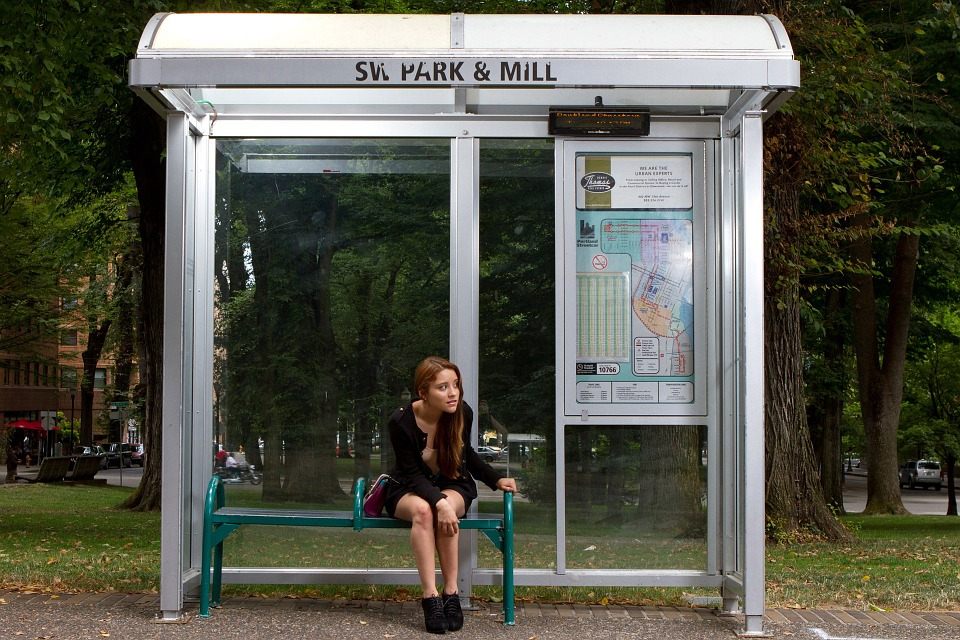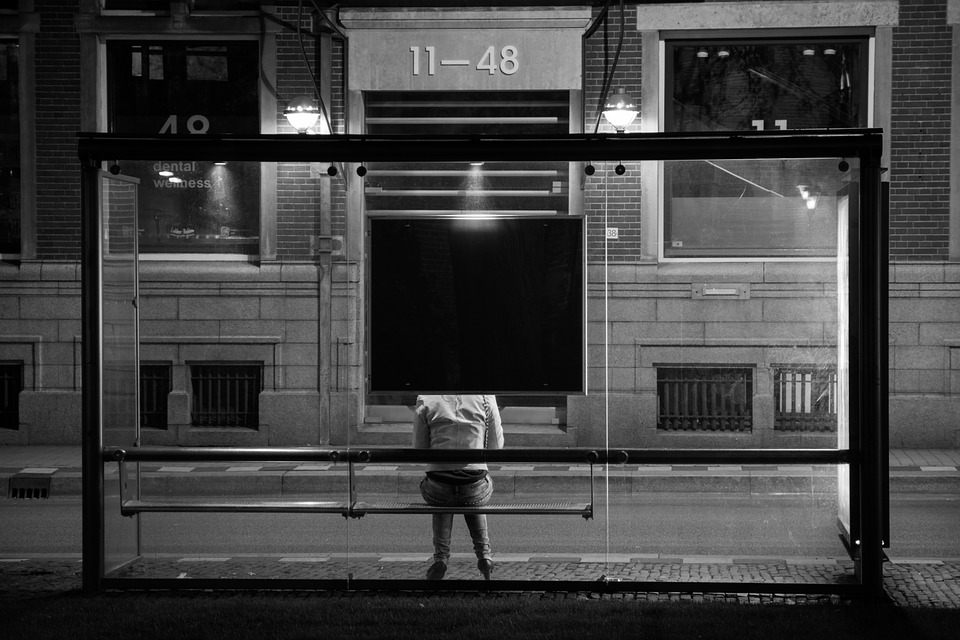The Secret Weapon That Could Make Waiting for the Bus Less Terrible

Every minute at the bus stop feels longer than it actually is (Photo: Public Domain Pictures/Pixabay)
Waiting at a bus stop or a subway station, it can feel like the minutes stretch on forever, forever, forever, foooooooorever, for-ev-er before the train or bus finally (finally!) arrives. This isn’t because your local transit agency is conspiring to make your life miserable. Your brain perceives the minutes spent waiting as longer than they actually are.
Studies of transit riders’ perception of time have found that people unconsciously multiple their wait times by a factor of 1.2 to 2.5. In this time warp, a five-minute wait can feel like it takes anywhere from six minutes to 12.5 minutes.
The vibe at the stop can make time feel even longer, too. Say a woman’s waiting for a bus at a stop where she feels unsafe. In this situation, time can feel three times as long. That woman might tell you she’d been there for about 30 interminable minutes, when only 10 minutes had passed.
Even under normal circumstances, though, transit riders hate waiting. “People actually consider waiting at the bus stop for buses as among the most unhappy moments of their life,” says Yingling Fan, an University of Minnesota associate professor who specializes in planning and policy.

Pure misery (Photo: Frank Hank/Wikimedia)
Transit agencies do already have one proven strategy for mollifying the masses. Tell us exactly how long we have to wait, and we will quietly accept it, which is why transit agencies across the country have started installing wait-time clocks. If you know the train will come–in just four minutes!–those four minutes pass more peacefully, with the knowledge that the train will come forestalling at least a portion of those neck-craning glances down the track. But these clocks are not a cure-all, in part because they can be expensive to install.
Market researchers have also spent years developing tricks to make waiting less terrible. Waiting in a rigidly straight line, for instance, makes people crazy, but put us in one of those meandering, switchback-style situations, and we’re much happier.
Fan and her colleagues are searching for the analogous secrets to making transit stops tolerable–station designs that can mitigate the exasperation of waiting and make people perceive the passage of time at a more-or-less normal rate. What they’re finding promises a better world for transit riders, because, according to their research, making wait times more bearable is quite simple. They’ve already identified one secret weapon in the fight against tedium–trees.

The minutes seemed like hours, and they passed so slowly (Photo: Skitterphoto/pixabay)
They began by choosing 36 rail and bus stations in the Twin Cities, in residential and commercial areas, in both urban and suburban neighborhoods. At each station, they documented the waiting area and the surrounding environment. Was there seating? Water foundations? Restrooms? How clean was the station? Was route info clearly posted? How wide was the street? How heavy was the traffic? Was it noisy? Were there landmarks around? Trees? Trash and graffiti?
They also observed the people waiting at the stop. A research assistant would find a discreet place to set up a camera and film riders while they waited. This video could be used to document all sorts of variables about the study subjects–if they were male or female, if they were alone or in a group, if they were carrying bags, whether they sat, stood or played with their phones while waiting. Most importantly, though, it allowed the researchers to measure the actual time people spent waiting at the station.
When the bus or train arrived, another team of research assistants would board along with the riders and ask them to fill out research surveys. The first and key question: How long did you spend waiting for the bus or train?
Across the more than 800 people who were included in study, the average wait was 5.57 minutes. But the riders believed they had waited significantly longer. When the team analyzed riders’ reported wait times, they found their research subjects’ perceived wait times averaged out at 6.78 minutes.

Trees help a surprising amount (Photo: Andrew Longton/geograph)
What the researchers were really interested in, though, were possible connections between reported wait time and characteristics of the station or stop. And they did find some factors that were associated with more accurate perceptions of wait times.
The first was very simple. Basic amenities–a bench and a shelter–meant “significant reductions in reported wait time.” In other words, if people had a place to sit and a shelter, their wait didn’t feel quite so long.
This might seem intuitive, but it goes against the strategy that many cities have adopted in sprucing up transit system. “A lot of the time, when policymakers invest at a bus stop or station, they’re trying to create a high amenities environment,” says Fan. “It’s expensive, and you can only improve so many stations. But our finding suggests that just having basic amenities could mitigate people’s waiting time experience.” Instead of having a few relatively luxe stations, maybe cities should be adding benches and shelters to stops that are, right now, just a metal pole and a sign.

Trees, bench, shelter–actually a pretty good bus stop (Photo: självskapat/Wikimedia)
In a second study, Fan and her colleagues looked at environment around the stop. There, they found that if people were waiting for more than five minutes, high air pollution or traffic tended to push people to overestimate, even more dramatically, how long they were waiting.
On the flip side, though, people waiting at stops in tree-heavy areas didn’t feel like they were waiting all that long. Sometimes they even underestimated how long they had been waiting. The longer they were waiting, too, the more difference the trees made.
As simple as this finding is, it creates a bit of a conundrum for transit agencies. Usually, the duties of getting people places and planting trees are divided, and a transit agency wouldn’t have much to do with the tree cover around its stations.
But the Minnesota’s team research suggests that perhaps they should get into this business, or at least start inter-agency partnerships to get more trees near bus stops. If trees can actually make people underestimate their wait times, that is a powerful kind of time-warping magic.

This story appeared as part of Atlas Obscura’s Time Week, a week devoted to the perplexing particulars of keeping time throughout history. See more Time Week stories here.














Follow us on Twitter to get the latest on the world's hidden wonders.
Like us on Facebook to get the latest on the world's hidden wonders.
Follow us on Twitter Like us on Facebook